Introduction
The event organisers, the RSE and CoDeL (Community Development Lens), invited a dynamic and diverse group to attend this event. The RSE moto of ‘Making Knowledge Useful’ was certainly brought to bear at this gathering of a wide range of discipline knowledge displayed. CoDeL, who also helped organise the event, is rooted in over a decade of work on the seven islands in the Outer Hebrides in Scotland that make up ”Uist”. The islands include from north to south, Berneray, North Uist (and Baleshare), Grimsay, Benbecula, South Uist and Eriskay, and stretch for 60 miles, linked by an intricate system of causeways.
Particular thanks go to organisers Cristina Clopot and Ishita Parakh from the RSE, and to Thomas Fischer and Theona Morrison from CoDeL. CoDeL was set up on Uist in 2018, by Thomas, Theona and also Gemma Steele. In addition, a really big thanks to David Salt, Karen Salt and Keith Fountain, Trustees of the Williamson Trust, who kindly sponsored and personally supported the event. Karen Salt talked about the moto of the Williamson Trust which is: “Healthy planet, healthy people, healthy communities”. A motto most suitable for this event, and of course, I would add a Healthy soil too! She said that ideas of creativity happen everywhere in every single person and that individuals/groups should invest in where that knowledge comes from – i.e. the community! We need to sit together in partnerships to do things differently.
Background
The gathering consisted of around 30 people who met in the conference hall at the Gaelic College at Sabhal Mòr Ostaig, on the Sleat peninsula, Skye. Many of the group were meeting for the first time. The event commenced with a delightful piece from Skye musician and artist, Eilidh Mackenzie, who shared her research on the 18th century traveller Thomas Pennant, presented in her newly published book, and talked about her exhibition ùir-sgeul | earth story which was held in Portree throughout August 2025. Place, people and culture were important themes. Tennant was from the wealthy of the time and was tentatively welcomed into the Highlands and Islands. Eilidh talked about the Sheilings and how the songs have been passed from generation to generation and have survived, such as those in the Frances Tolmie Collection. Frances Tolmie was born in Skye in 1840 and died there in 1926. Her life-long love of Gaelic lore and song bore fruit in 1911, when her collection of one hundred and five songs of occupation was published by the Folk-Song Society with a vision into the historical Sheilings. The term Sheiling denotes a seasonal mountain pasture for the grazing of cattle in summer. Seasonal pasturage implies movement between the shieling and a valley settlement in winter. Many Scottish songs have been written about what life was like in shielings, often concerning courtship and love. The ruins of shielings are abundant landscape features across Scotland, particularly the Highlands and reminders of times and folks past.
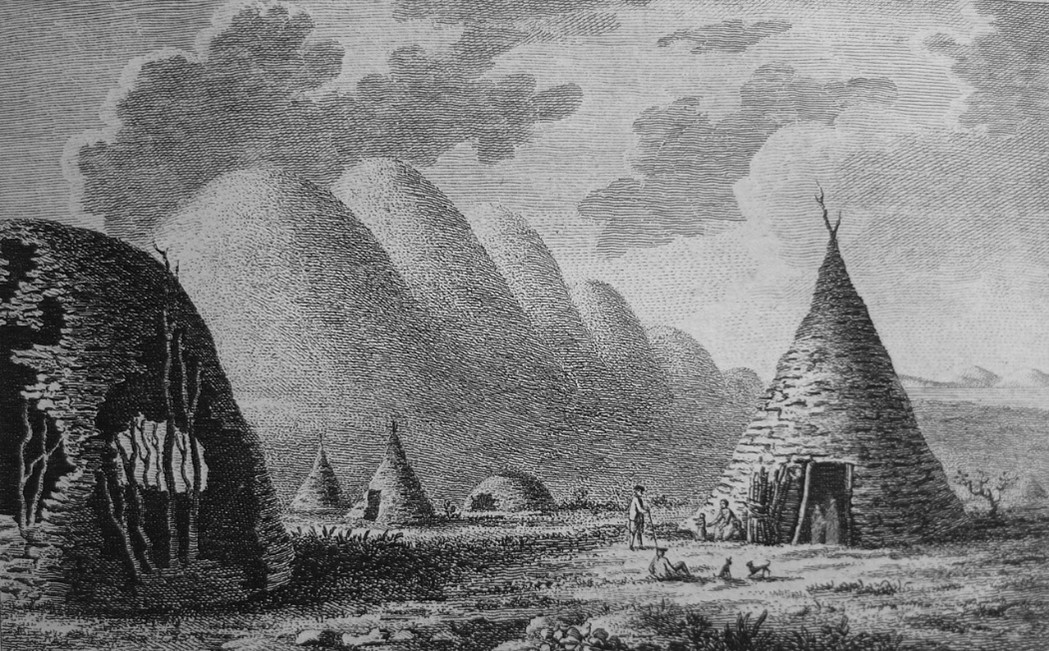
Plate 1: Drawing by Moses Griffiths - Thomas Pennant, A Tour In Scotland And Voyage To The Hebrides 1772, London 1774. Source; Wikipedia.
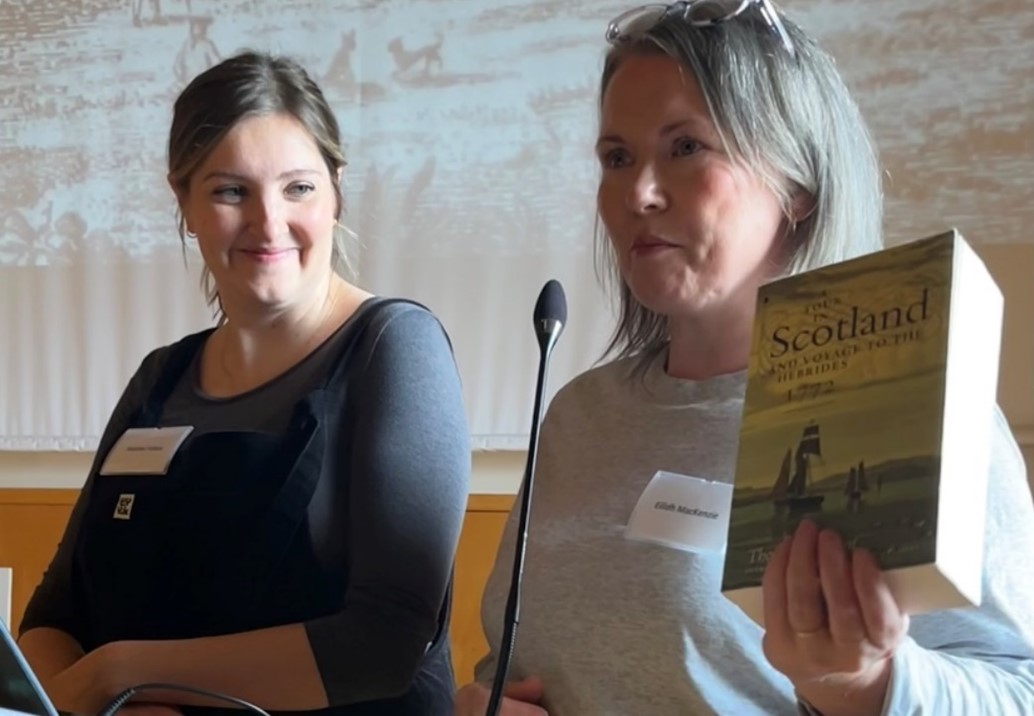
Plate 2: Artist Eilidh Mackenzie talking about a book, with Heather Fulton from Atlas Arts. Source Lorna Dawson
The event organisers, Theona and Thomas warmly welcomed everyone to the event. As we sat in a welcome horseshoe with a glancing view of the sea, it felt a little bit magical - with four seasons every hour in the background.
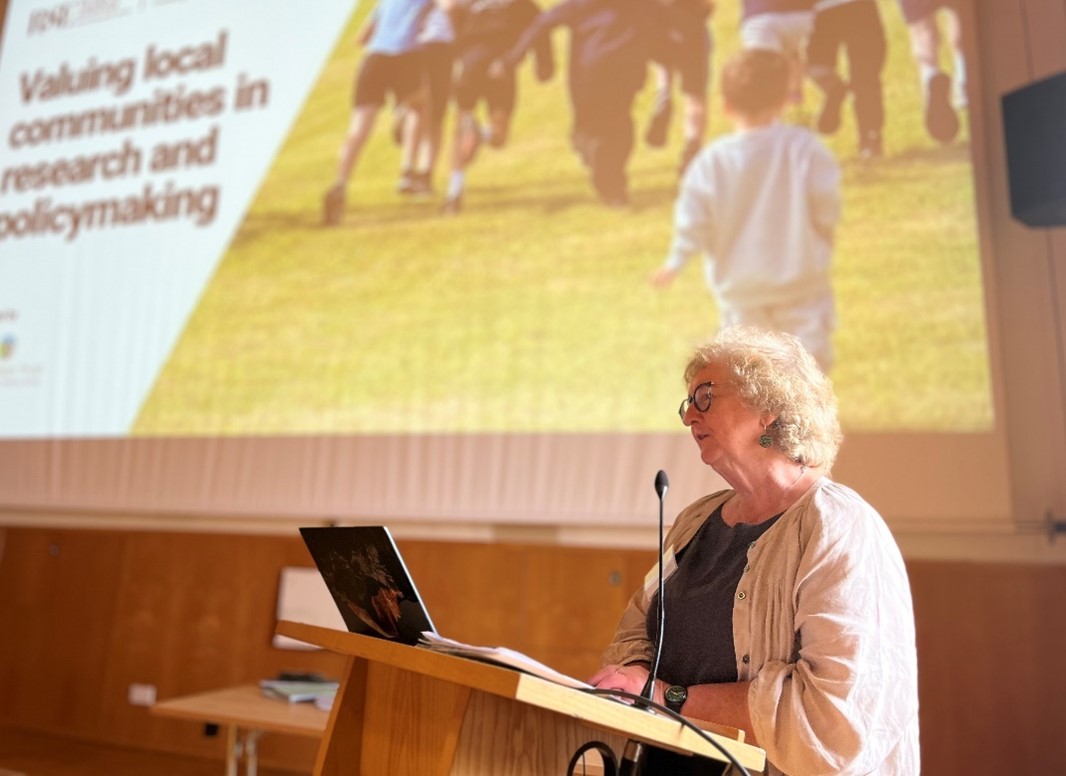
Plate 3: Theona Morrison opening the event. Source: Lorna Dawson
Session 1 was composed of a group of lovely case studies about Community-rooted research and was chaired by Mairi McFadyen and myself. “Fàilte oirbh. Feasgar math dhuibh uile, tha e math a bhith an seo an-diugh aig Sabhal Mòr Ostaig airson an cruinneachaidh seo” we said. Or “Welcome, good afternoon everyone, delighted to be in Skye to be a part of this gathering”.
I talked about the six institutes that constitute SEFARI and showed how we at SEFARI Gateway deliver science for people and policy in Scotland, including community rooted research, so we were particularly excited to hear all the great examples of community based research over the next two days. We provided space for the presenters to introduce themselves on their own terms, in their own voices.
We modelled the session on the principles of community-rooted research itself—a collaborative and reciprocal approach to knowledge-making, that centres the diversity of voices, priorities, experiences, and knowledge of communities themselves. Interestingly, we had worked with a few of the people there in the Gateway funded project ‘Islands Revival’. Islands Revival was a knowledge exchange project with partners from The James Hutton Institute, CoDeL, SRUC and Community Land Scotland.
Each of the five presentations in this session highlighted community-rooted research, but in different ways…themes included the creative arts, heritage, knowledge and futures in local communities; research as a living part of community action and development; the inclusion of groups who are often ‘off the radar; and the policy implications of reaching out to those people; community-commissioned research on rural and island education and demographics; and questions of whose voices are heard in decisions about land, rural assets, and the Gàidhlig language.
Our first speaker was Heather Fulton. Cuir fàilte bhlàth oirre. Heather Fulton, ATLAS Arts, Skye, Raasay & Lochalsh talked about the different types of knowledge, creative arts contributions, young people, artists and communities exploring knowledge, heritage and potential futures within the Gàidhealtachd. At Atlas Arts they support artists, share culture, host the school of plural futures and listen and learn. They host residencies which foster meaningful conversations and outputs.
Next up was Reeni Kennedy-Boyle, from the Isle of Bute, showing how research should be seen as an integral part of community action and development. She talked about some actions with, for example, Fyne Futures where she is helping people get onto the ladder of self-employment. Set up a social enterprise where it’s all about people in the environment. She said that they need to understand who the voices are and to involve them and provide support for many small entrepreneurs. Reeni talked about how she has worked directly with CalMac by introducing them to the users of the ferry on Bute to find out what the actual end users want. It was seen as a success by valuing and listening to the people who actually use the ferry service. True direct collaboration in action.
Mary Mitchell from Dumfries & Galloway presented research on ‘alternative’ communities, reaching out to and valuing groups who were generally ‘off the radar’, with potential policy implications. She even ran a little experiment with the attending group, obtaining data in a ‘characteristics matrix’, finding out if any of us were ‘alterative lifers’ ‘bucking the trend’ in the context of a decreasing rural population. Most people sat about ‘almost normal’ in the spectrum result - although a few came out as ‘way out there’! not me I should add....She talked about D & G as being the forgotten corner of Scotland, but with the work she was doing there, especially with self employed people, often working on the land, and near subsistence level, it is certainly clear the people of D & G are not being forgotten.
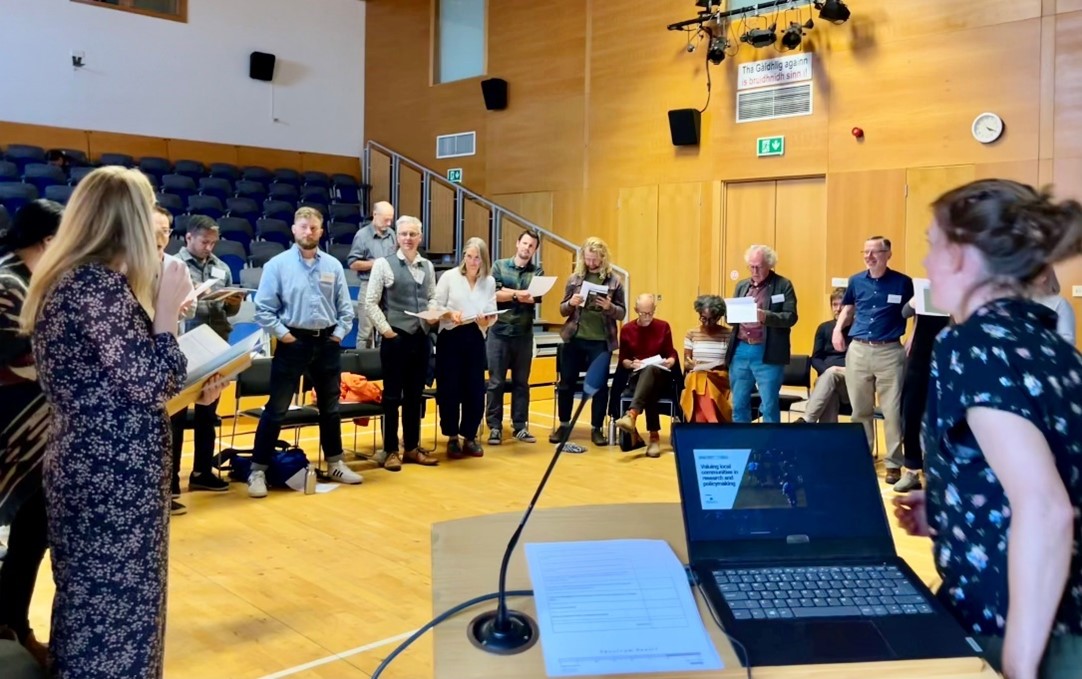
Plate 4: Mary Mitchell carrying out the character assessment with the group. Source Lorna Dawson
Theona Morrison, CoDeL, Uist, spoke about community-rooted research on rural and island education and demographics, including research commissioned by communities. She talked about how many islands around Uist which are no longer inhabited and concern as raised about the aging population. However, when research was carried out through direct collaboration (e.g. The Islands Revival project) the data showed that there had indeed been a turnaround of fortunes and young people were actually returning to Uist and it was seeing the green shoots of recovery.
Issues of viability of communities were voiced by Iain MacKinnon, Isle of Skye, who discussed that all voices count, and who are actually heard, as well as the importance of our land, the rural assets and of course, the Gàidhlig language. He told us stories about how people had been drained by the land through extractive policy making. His very own uncle Donald had been driven from his home. He told Iain about the land on his croft before he died: “ I love this place, but I may not like it anymore”.
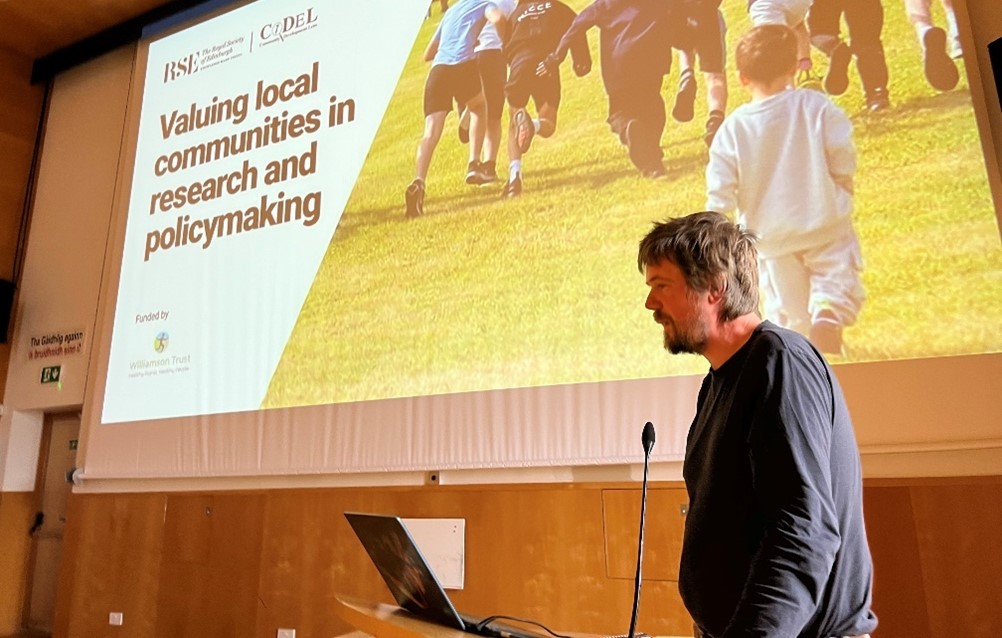
Plate 5: Iain MacKinnon, local Skye crofter. Source Lorna Dawson
It was clear how much the richness and diversity of community-rooted research brings to both knowledge and policy. After the presentations, we opened up for questions and a discussion session, building on these ideas together—exploring, creating, and nurturing common ground. With some research ongoing there is often a preconceived idea of what is happening while really people living in the community should be asked directly what they are thinking.
What tied all of these stories together is the principle that all voices matter, and that research is at its strongest when it is plural, relational, and accountable to communities. We’ve seen how research can be a tool for dialogue, empowerment, and real-world impact—when it is rooted in the lived experiences and knowledge of local people. This session inspired ideas about how we can continue to listen, learn, and work alongside communities, valuing their knowledge in policymaking, and creating spaces for collaboration, creativity, and mutual understanding. Mile taing…
Session 2 debated how best to achieve good and impactful research with the research methodologies and good practice. This was co-chaired by Domhaill Uilleam Stiubhart (Sabhal Mòr Ostaig) and Des Thompson (RSE). It was structured as a panel discussion, with a series of short contributions from panellists, followed by a question and discussion session. Des started by telling us about the great example of collaboration to bring about a rise in the golden eagle numbers, borne out of a community of place and a community of interest. All driven by a desire to see a growing population of golden eagles in Scotland.
The first speaker was Mairi McFadyen talking about the role that local knowledge and a relational approach to Community research can bring. She touched upon examples from Canada and New Zealand where formal protocols are in place to avoid exploitation. However, communities must not be treated as a commodity and formal protocols should aim to avoid extraction, perceived or real. One of the biggest risks – The book Epistemic Extractivism and its dialogue with Alberto Acosta, Leanne Betasamosake Simpson, and Silvia Rivera Cusicanqui was discussed. The term ‘dùthchas’ was talked about- with a definition being a sense of belonging and a relationship between place and who you are. The spirit of a place. Community based knowledge is rooted in place. The Gaelic language embodies a fundamentally different way of relating to the land: people belong to places, rather than places belong to people. Historically, dùthchas was a customary law – a hereditary collective claim or right to land, or dùthaich, not subject to tenure, lease or rent. Such a claim was lived out through shared stewardship and bound up with relationships to others. Such ideas of place and relationship are completely at odds with private property, the idea that land can be bought and sold. In this sense, dùthchas questions the very notion of ownership and challenges some of the most deeply embedded assumptions of modernity such as capitalism and individualism. It is also plural- all voices are valuable. People should give back more than they take out. Respect, responsibility, relationships and local were key terms used.
Thomas Fisher from CoDeL then spoke about articulating and amplifying community voices and perspectives through research. One must respect the knowledge held in local Communities. To aspire to see things through the lens of the rural/island community. To value local experience, culture and through storytelling, both written and spoken. We also heard that ‘Living labs’ don’t work! Researchers should reach into the community processes and facilitate these for communities to articulate their own visions for their future, e.g. social enterprise Place Uist. He said: ‘Local people want to change the narrative about themselves’. A bit of facilitation will be required for the community to have the research rooted to drive impact. There felt like a bit of a call to action, with: ‘ the power to reclaim is within us, and the path forward begins at home.’
Luis F Yanes, Scottish Human Rights Commission, and Uthe book University of Edinburgh, spoke about impacts of human rights perspectives on research methodologies. Sadly we see human rights violation everywhere in every single community Luis said. Most people don’t even know their rights. The right to food, the right to housing, the right to clothing, access to cultural life, right to health etc. etc. The court knows the law. One problem is current data is disaggregated. For example, Public Health Scotland does not collect data on malnutrition, so no data equals no problem?! Depopulation is happening in rural areas in Scotland, places such as Inverness which is growing, cancel out areas with major losses, and places are fading away. We must ensure that the people are at the very heart of it. Luis also indicated the importance of when researchers are working in rural areas they must dress appropriately to make the interviewee feel comfortable. The researcher can either destroy or enhance an interview by considering where to carry out, what to wear, listen, record or not, or even whether to cry in empathy or not.
Hyab Yohannes, Young Academy of Scotland, and the University of Glasgow, discussed research with refugees informed by decolonial thinking. He read a wonderful poem articulating feelings of desperation as bodes ended up washed out to sea during war. The Refugee Atlas. What an amazing resource. The direct source of inspiration in the attempt at creating a visual atlas concerning the experience of migration and the destiny of refugees was the famous Bilderatlas Mnemosyne by Aby Warburg. His ideas that images are entities in a constant movement, and that culture consists of tensions and migrations of motives were also crucial for thinking about the work on the Refugee Atlas. Hyab went to Cairo to trace the remains of the drowned refugees, still not yet returned to their people and place. Bodies had been thrown into the sea during COVID. He said: ‘Where are our friends, with a deep breath, our thoughts dissolve into, the abyss.’ He is a writer, poet and an activist whose work is deeply rooted in his lived experience as a former refugee from Eritrea. He is currently a Lecturer in Forced Migration and Decolonial Education at the University of Glasgow, affiliated with the UNESCO Chair in Refugee Integration through Languages and the Arts. He has published a book on this subject.
Susan Paxton, SCDC, presented reflections on community-led approaches to research based on the experience of the Scottish Community Development Centre. At SCDC they work directly with community organisations, people who work in communities and with people who make policy. They deliver large scale programmes across Scotland to help build the capacity of the community sector, support public agencies to work effectively with communities and to widen participation in local democracy. She said that success will be through equal partnerships. That way bridges are built between research and organizations set in communities. They support and manage a series of networks, using the learning from these and working with communities and community practitioners to inform policy and legislation. Communities should be at the heart of the research; ‘Doing with, not to’! She also said that we should throw out the word ‘engagement’. Poetry can be a great tool to express feelings. Following on from Luis’s discussion, Susan reflected how important it is to consider such things as how you dress at an interview, and how people are feeling. After all, the locals are often expected to ‘put their soul on a plate and trust the interviewer with often very personal information’. They need trust.
Discussion around the relationship of transcendence and people feeling that ‘My culture is a resource, but for whom?’ Treasure heritage to keep it alive. We should aim for better practice, better collaboration and we must learn from our mistakes. It is really important to give people the tools to express themselves in the way they feel most comfortable. It was felt that there is a vast knowledge in Scotland as to how to carry out the research but communities feel they have no more capacity. In the act of translation important information can be lost. In particular the non-verbal communication. Communities do need support to help sort out the varied and many different issues. We have heard many different stories over the day, SKYE, D & G, Uist, Bute and Syria. And we must consider the many different ways to work with communities, from poetry, art and drama. The quotation, ‘Art is like jester in the Court of Society’ suggests we need more carefully created art to delve into the many communities across the Highlands & Islands of Scotland. An informal discussion was continued over dinner.
On the second day the group re gathered in the large hall. It was agreed that there was a feeling of excitement in the room. There was willingness to do it better, to listen and improve and learn and to collaborate. The plurality of voices was clear. The need to find a common ground was clear, even if there was contradictory ideas. Need to be clear where the outputs from the research goes. There has to be a partnership spirit, not extractive but enhancing. Training will be how to facilitate using the existing platforms to provide opportunities for communities and community led research. Session 3 discussed how can we incorporate community knowledge and community-rooted research into our own practice to contribute to the right action and policy. This was co-facilitated by Theona and Thomas. People in the group are not afraid to say that we can do better. It provided an opportunity for all participants to explore ideas for future opportunities, methodologies, and partnerships for impactful community-rooted research, including drawing on insights and inspiration from the previous day’s sessions. We all worked together in small diverse groups to come up with ideas.... and then all the ideas were shared with the full group, enabling all voices to be heard. The individual groups of three were asked to express what excites them most from the conversations already had and what opportunities do you see emerging for the community-rooted or community-led research. We were asked to provide our visions (e.g. creation of an environment that leads to fair, just and transformative change), opportunities (e.g. informing and shaping future research), potential actions (e.g. use the banner of objectivity) and recommendations and guidelines (e.g. build rooted research platforms and recognise that who/how/where research is carried out will produce different results). Rooted in belonging, a metaphor, more than human, connected, place based and environmental and cultural.
Session 4 explored and articulated final recommendations and moved towards developing protocols for collaboration around community-rooted research. This was Co-chaired by Hannah Grist (SRUC) and Mairi McFadyen. They facilitated the ongoing process and drew out insights and recommendations for best practices in collaborative research that recognise community knowledge and agency and can contribute to positive action and policy. There is a community land of strangers. And there are brilliant opportunities to story tell and provide real solutions.
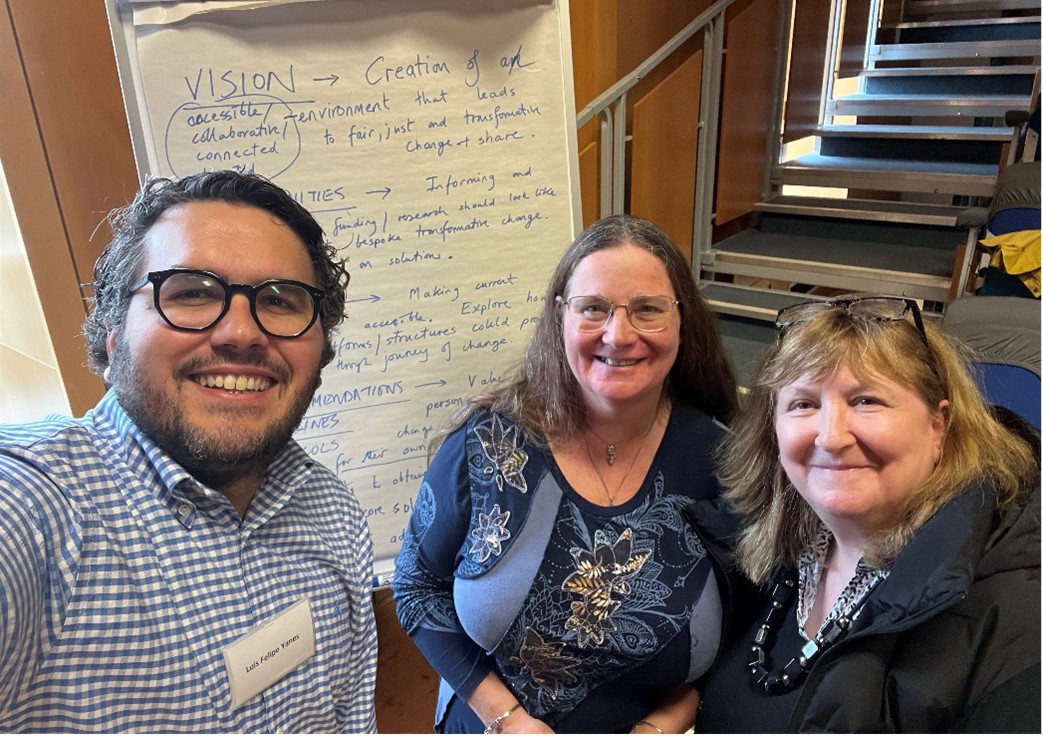
Plate 6: One of the individual working groups building proposed visions and actions for rural community research with from L to R- Luis F Yanes, SHRC, Reeni Kennedy-Boyle and myself. Source: Lorna Dawson
The air around us is still fundamental to us all. A river system as part of that whole life system, from the rain in the clouds to the estuary where it reaches the sea, was used as a metaphor for the process of collaboration around community based research. Everyone took part with writings, drawings and presented poems in and around the river, all articulating how his community based research could best be carried out for greatest community impact. I mentioned the opportunity to make an impact on the next Scottish Government’s RESAS funded Strategic Research Programme (SRP) by contributing to the consolation which closes on the 24 October 2025. There was a lot of interest in developing and expanding areas of collaboration and cooperation in community based research in Scotland.
Summary
A wonderful few days were had in a fabulous place at the Sabhal Mòr Ostaig, Skye. SEFARI Gateway contributed to this event with staff expertise from both JHI and SRUC, and from impact examples of past collaboration such as the Islands Revival work. One major outcome of the Islands Revival project was the Islands Revival Declaration. Let’s hope that the outcome of these two days’ work will achieve just as much, if not more! Look out for a report being written by the RSE and CoDeL, as well as input from all participants, identifying key findings from the workshop and the proposed way forward. Certainly the true value of Local Communities role in Research and Policymaking was highlighted and great things are expected to arise from these many conversations. Talk was already underway about planning and hosting a week-long event next summer in Skye. Count me in!
Lorna Dawson, Knowledge Exchange Broker, SEFARI Gateway
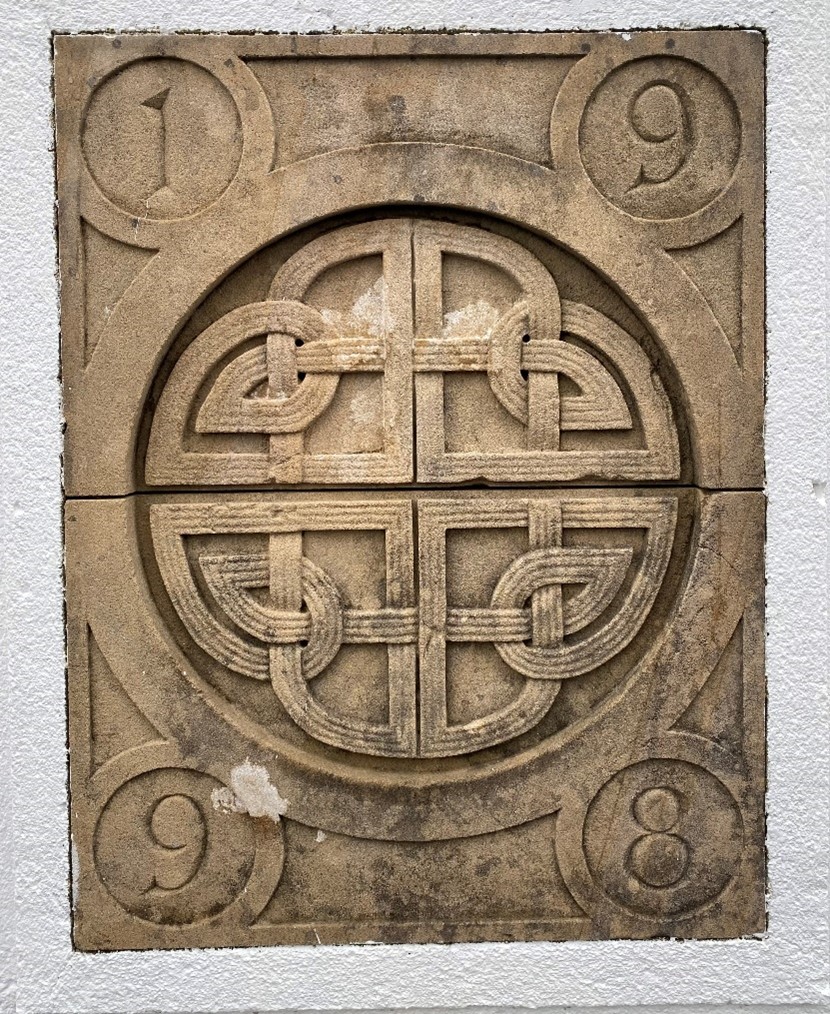
Plate 7: The stone embedded at Sabhal Mòr Ostaig, Skye in 1998 when it was built. Source: Lorna Dawson
